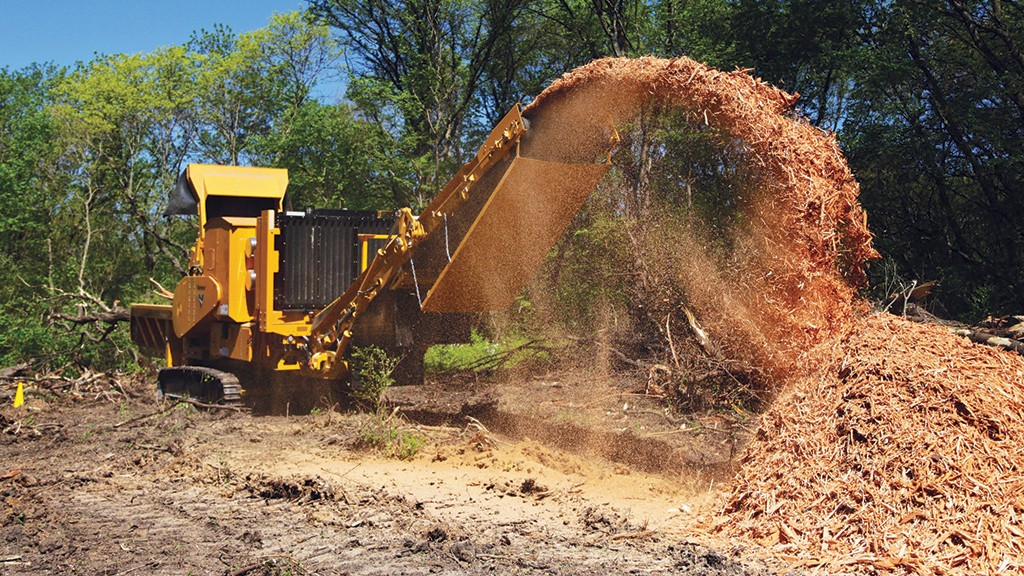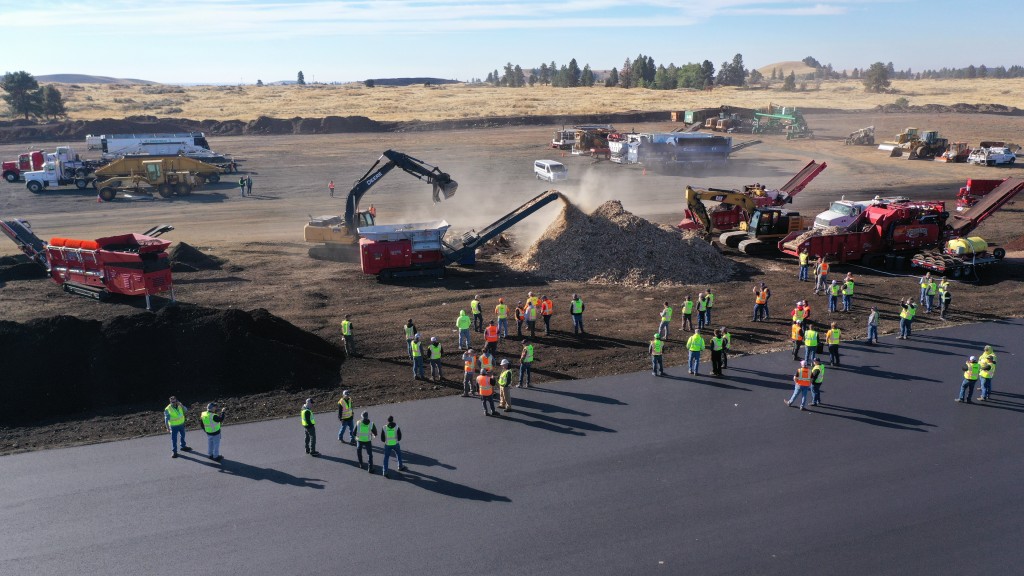
When it comes time to add or replace a grinder in your equipment fleet, one of the first questions you should consider is, "Do I need a tub grinder or a horizontal grinder?"
It is important to compare the two grinder designs and features for yourself and then determine which is right for your operation. Here is a brief overview of what to consider during the selection process.
1. Safety factors
According to David Steege, recycling account manager at RDO Equipment, properly trained and experienced operators know that if they are working with material that may contain non-organic contaminants (i.e. metal), they need to spend a bit of time sorting and paying close attention to every load they feed into the grinder. This step will help mitigate the risk of thrown objects.
"With tub grinders, features like the patented thrown object restrain system (TORS) found on Vermeer models, can help reduce the amount and distance of thrown objects," explained Steege. "The TORS system has a deflector plate positioned across from the hammer mill to help redirect loose material back inside the tub. Making sure the tub grinder's bowl is filled to proper capacity per your operator's manual also can help reduce the risk of the grinder throwing material. Since tub grinders use gravity to feed the hammer mill, a full tub can provide an additional layer of protection to help keep material where it belongs."
To mitigate the risk of metal contaminants cycling through with organic material, Vermeer grinders (tub and horizontal) can be outfitted with the optional Vermeer Damage Defense System. When a metal contaminant is detected during operations, the Damage Defense System will alert the grinder control and automatically initiate the shutdown process.
2. Space availability
You may have heard that tub grinders need a lot more room to operate. This is due to the distance thrown objects can travel, but Steege explained that there is more you need to consider in the working area.
"Tub grinders will often be used to process a lot of different types of wood waste, and possibly in a setting where the incoming material may not be the cleanest. Tubs can handle that type of material, but it's always advisable to have more open area surrounding the machine. Otherwise, the operational space needs for horizontal and tub grinders are similar."
3. Material sizing
Next to assess is which machine will size your material more consistently. There are several factors to consider beyond the basic tub or horizontal grinder design.
"Consistency of material sizing can be more related to the quality of the machine and how all of the moving parts work together than whether it's a tub or horizontal grinder," said Steege. "The Vermeer duplex drum system and screen configuration optimize the grinders' performance to produce a quality end product."
According to Steege, taking a look at the size of the incoming material is a more important consideration.
"When I'm in the field talking to contractors and facility managers about grinders, one of the first things I ask them about is the type and size of material they are going to be grinding. Horizontal grinders are more efficient than tubs at handling longer material because less cutting is required before it can be fed through the machine. So, if they are going to be running long branches and tree trunks, a horizontal grinder will likely be their more efficient machine. However, if they are running a bunch of stumps and odd sizes of material, they are going to want a tub grinder."
For loose green waste, Steege said either grinder is fine, but tub grinders may be more efficient for their operation. "With horizontal grinders, the material is being force-fed into the drum, but tubs use gravity, so there are fewer moving parts involved with the process."
4. Transportability
Depending on your line of work, hauling and moving a grinder around your facility is another factor to consider. If you're working on a big job or you frequently need to reposition the grinder, you're going to want to look at a grinder with tracks.
If you're moving from one site to another, you may want to review any size and weight restrictions in your area to see which unit will be more efficient to haul.
"The sides on Vermeer tub grinders fold in for transporting, which gives them a similar travel width to a comparably sized horizontal grinder," Steege explained. "However, tub grinders without a loader are considerably lighter than that same horizontal grinder, which can help reduce transportation expenses."
Weighing the pros and cons of tub and horizontal grinders
As you can see, both tub grinders and horizontal grinders have helpful qualities to offer. So, when it's time to add or replace a grinder in your fleet, it's important to think about your needs and what type of grinder will deliver the best results for your organization.


